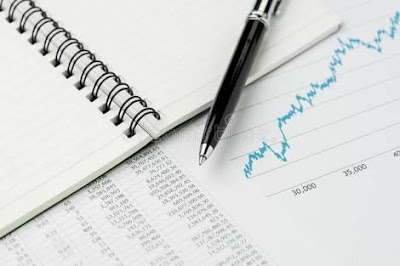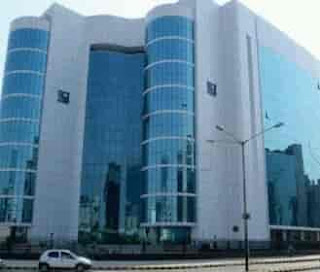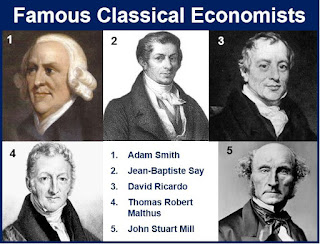UGC NET Macroeconomics Test series 2 for UPSC and other competiton exams
Below are the Mcq for macro economics Test series 2 . The test series will be beneficial for ugc net ,Upsc and other competion exams.Kindly comment your answer in comment box.We will send answers to your email id.
For test series 1 pls check blog below already published.
Stay tuned and subscribed for test series 3
MACRO ECONOMICS MCQs www.iemsnet.com
Check here for test series 1
Macro Economics Test Series1
TEST SERIES 2
1. Frictional unemployment exists:
(A) When there is a decrease in real GDP
(B) Because it takes time to find a job when one is first entering the labour force
(C) As a result of technological change
(D) When an individual retires
2. The natural rate of unemployment equals the sum of those who are:
(A) Frictionally and structurally unemployed
(B) Frictionally and cyclically unemployed
(C) Structurally and cyclically unemployed
(D) Frictionally structurally and cyclically unemployed
3. The marginal productivity of labour is:
(A) The incremental output due to an increase in capital, ceteris paribus
(B) The incremental output due to an increase in labour, ceteris paribus.
(C) The incremental output due to a change in technology, ceteris paribus
(D) The incremental output due to a change in technology and a change in the amount of capital.
4. The marginal productivity of labour:
(A) Increases when the price of the good sold increases, ceteris paribus
(B) Decreases when there is an adverse supply shock, ceteris paribus
(C) Increase when more workers are hired, ceteris paribus
(D) Decreases when there is an increase in the quantity of capital, ceteris paribus
5. When saving is greater than investment in a two-sector model,
(A) Output should increas
(b) Output should decrease
C) Output should not change
(d) None of these
6. When output exceeds spending:
(A) There is unsold output, and level of output will fall
(B) There is unsold output, and level of output will rise
(C) There is unsold output, and level of spending will rise
(D) There is no unsold output since the level of spending will rise
7. When investment is negatively related to the rate of interest, equilibrium output in the
goods market:
(A) Is unrelated to the rate of interest
(B) Is inversely related to the rate of interest
(C) Is positively related to the rate of interest
(D) Falls as the rate of interest decreases
8. Simultaneous equilibrium in the money (LM) and goods (IS) market exists:
(A) At an unlimited number of output levels and rates of interest
(B) At only one output level and rate of interest
(C) At an unlimited number of output levels and only one rate of interest
(D) At only one output level and an unlimited number of rates of interest
9. In which of the following situations will an increase in the money supply have no effect
upon output?
(A) LM is steeply sloped and IS is steeply sloped
(B) LM is vertical and IS is steeply sloped
(C) LM is steeply sloped and IS is vertical
(D) LM is relatively flat as is IS
10. Crowding out occurs when:
(A) A decrease in the money supply raises the rate of interest which crowds out
interest – sensitive private sector spending
(B) An increase in taxes for the private sector reduces private sector disposable
income and spending
(C) A reduction in income taxes results in a higher interest rate, which crowds
out interest–sensitive private sector spending
(D) A reduction in government spending induces less consumption spending
11. Policy Neutrality is the main proposition of:
(A) Supply Side Economics.
(B) Keynesian Economics
(C) Monetarism
(D) Rational expectations hypothesis
12. Who invented the General Equilibrium analysis?
(A) L. Walras.
(B) W. Leontief
(C) J.M.Keynes.
(D) None of these.
13. Employment equilibrium in the Classical theory is achieved through:
(A) Wage-Price flexibility.
(B) Changes in aggregate demand
(C) Changes in aggregate supply
(D) None of these.
14. Market does not clear is a proposition of:
(A) Neoclassical theory.
(B) Keynesian Economics
(C) Monetarism
(D) Rational expectations
15. The interest rate paid on bonds is known as:
(A) Call rate
(B) Coupon rate
(C) Repo rate
(D) Bank rate
16. The monetary policy is completely ineffective when the LM curve is:
(A) Vertical .
(B) Horizontal.
(C) Upward sloping
(D) Downward sloping
17. Monetarism is associated with:
(A) Keynesian school
(B) Chicago school
(C) Cambridge school.
(D) Neo-Classical school.
18. Changes in the subjective or objective factors
(A) Never affect consumption function
(B) Always cause downward shift in consumption function
(C) Always cause upward shift in consumption function
(D) They cause upward or downward shifts in consumption function
19. Saving is a function of
(A) Export
(B) Import
(C) Investment
(D) Income
20. Entrepreneurs will have no tendency to expand or contract output and employment
when
(A) AD>AS
(B) AD<AS
(C) AD=AS
D) None of the above
21. The slope of the consumption function is called
(A) MPC
(B) MPS
(C) APC
(D) APS
22. The concept of effective demand is associated with the name of
(A) Marshall
(B) Keynes
(C) Krugman
(D) Say
23. In a closed economy, the value of multiplier , when MPC is 0.90
(A) 25
(B) 90
(C) 10
(D) 9
24. Income is a ------- variable
(A) Flow
(B) Discontinuous
(C) Stock
(D) None of the above
25. Ratio of consumption expenditure to any particular level of income
(A) MPS
(B) APS
(C) APC
(D) MPC
26. Psychological law of consumption states that the value of MPC is lies between zero and
(A) 1
(B) 2
(C) 3
(D) 4
27. Net investment is also known as
(A) Depreciation
(B) Induced investment
(C) Autonomous investment
(D) Capital formation
28. In the saving function S = -a + (1-b)Y, the term ‘b’ denotes
(A) Saving
(B) MPC
(C) MPS
(D) APS
29. Who propounded Psychological law of consumption
(A) Adam Smith
(B) Ricardo
(C) Keynes
(D) Pigou
30. When MPS = 0.2, MPC will be
(A) 0.8
(B) 0.2
(C) 1.2
(D) 20
31. In the linear consumption function C = a + bY, coefficient ‘a’ denotes
(A) MPC
(B) APC
(C) Autonomous consumption
(D) Induced consumption
32. According to Keynes, rising aggregate income is always associated with
(A) Higher saving rate
(B) Higher import
(C) Lower export
(D) Low production
33. When MPC = 0.5, the value of multiplier is
(A) 5
(B) 0.5
(C) 2
(D) 4
34. Who postulated the law Supply creates its own demand
(A) Keynes
(B) J B say
(C) Marshall
(D) Pigou
35. Autonomous investment is
A. Income inelastic
B. Instable
C. Interest elastic
D. Income elastic
36. MEC for a capital good was found out to be 10% and the market rate of interest is 9%,
then the investment is
A. Not profitable
B. Profitable
C. Breakeven
D. Cannot say
37. In the Keynesian two sector economy, AD>AS, then
A. S=I
B. S>I
C. S<I
D. S=0
38. Value of MPC is
A. >1
B. <1
C. 0
D. 0≤ MPC ≥1
39. Schedule that expresses relationship between rate of interest and corresponding amount
of investment
A. MEI
B. MEC
C. Effective Demand
D. Aggregate Demand
40. Net investment is
A. Value of gross minus subsidies
B. Investment after providing for depreciation
C. Value of gross output before providing for subsidies
D. None of the above
41. MEC is directly related to
A. Prospective yield
B. Supply price
C. Rate of interest
D. All of the above
42. According to Keynes the most important determinant of consumption
A. Rate of interest
B. Saving
C. Income
D. Investment
43. In the Keynesian two sector economy, AD<AS, then
A. S=I
B. S>I
C. S<I
D. S=0
44. In the equation C = 60 + 0.6 Y, MPC is
A. 60
B. 0.6
C. 0
D. 1
45. Keynes assumed the presence of --------- economy for the fundamental law of
consumption
A. Capitalistic
B. Socialistic
C. Planned
D. None of the above
46. According to Keynes the most important determinant of investment
A. MEC
B. Effective demand
C. Aggregate demand
D. Rate of interest
47. When disposable income rises from Rs 500 to Rs 600 and consumption expenditure
changes from Rs 470 to Rs 560, MPC will be equal to
A. 900
B. 100
C. 0.9
D. 1
48. In a two sector economy, aggregate demand is equal to
A. C+I
B. C+S
C. S+I
D. All of the above
49. In Keynesian terminology, investment means:
A. Financial investment
B. Real investment
C. Induced investment
D. None of the above
50. Rate of change in savings to change in income:
A. APS
B. APC
C. MPS




Comments
Post a Comment